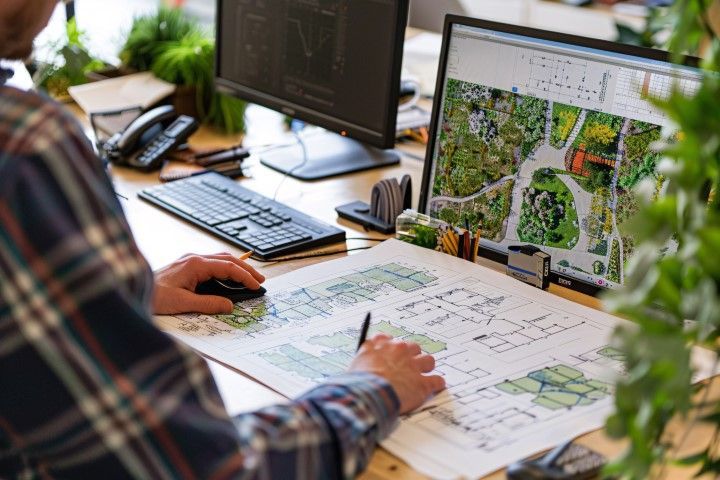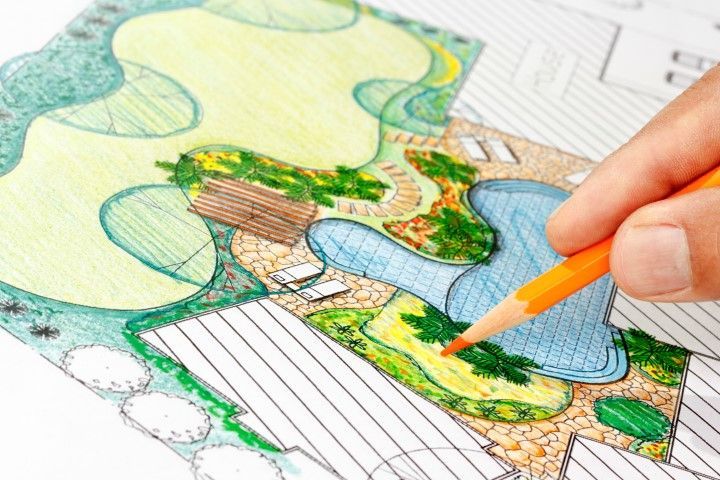Landscape Design in Lawndale CA
Creating an inviting outdoor space that feels fresh and beautiful in every season takes more than a quick plan. The climate gives homeowners a unique opportunity to enjoy their landscapes all year. Our team understands that each season brings different colors, textures, and feelings. That is why we have developed four clear approaches to seasonal landscape design in Lawndale, CA. With thoughtful planning, you can have a yard that looks appealing no matter the month.
Planting for All Seasons
The first approach is to choose plants that provide interest in every season. In spring, you may want flowering shrubs that burst into bright colors. Summer brings lush greens and bold blooms. Fall is perfect for trees and plants that show off warm shades of gold, red, and orange. Winter does not have to feel empty—evergreens, ornamental grasses, and certain berries can keep your garden alive. By combining plants that thrive in different seasons, your landscape stays dynamic throughout the year.
Layered Design and Structure
The second approach focuses on creating layers and structure in the garden. This means mixing tall trees, mid-sized bushes, and low-growing flowers. Layering makes your yard look fuller and more balanced. Adding pathways, raised beds, or concrete edging can define spaces and make each area feel special. These hardscape elements also provide visual interest when flowers and leaves fall away in the colder months. Good structure is the backbone of a lasting design.

Seasonal Color Rotation
Next, we plan seasonal color rotation. Many homeowners like to swap out container plants or garden beds with the seasons. This can be as simple as planting cool-weather flowers in fall and bright annuals in spring. Using movable pots or planters lets you change your look without a full redesign. Seasonal rotation gives you control over the mood of your landscape, so you can celebrate each time of year with fresh colors and textures.
Lighting and Decor Enhancements
The final approach is to use lighting and decor to highlight your yard all year. In the long summer days, string lights or lanterns create a warm glow for evening gatherings. In winter, lights can brighten dark corners and make your garden feel inviting. Decorative features, such as sculptures or water elements, add personality that does not depend on blooms or foliage. Even simple touches, like a bench or a birdbath, can become focal points when surrounded by seasonal plants.
A well-planned landscape does more than look nice—it brings joy and comfort in every season. Whether you want a peaceful garden retreat or a lively outdoor area for entertaining, our team is ready to help you design a space that reflects your style. We believe that with the right mix of plants, concrete accents, and thoughtful details, any yard can become a place you love year-round. If you are ready to start planning your seasonal landscape design, contact us today. We look forward to helping you create a yard that feels beautiful every month of the year.
The Role of Color Theory in Landscape Design
Color plays an important part in how we see and feel about outdoor spaces. In landscape design, the use of color is much more than simply picking plants or paint. It is about creating harmony, guiding the eye, and setting the mood of your garden or yard. Color theory helps designers plan spaces that feel welcoming, peaceful, or exciting. Whether you are working with plants, hard surfaces like concrete patios, or decorative pieces, understanding color theory can help you make smart choices. Below are the four main roles that color theory plays in landscape design.
Creating Balance and Harmony
Colors can make a space feel balanced. If too many bright colors are used in one area, it can feel busy or overwhelming. Using a thoughtful mix of warm and cool colors brings calm and balance. Warm colors like red, yellow, and orange often stand out and can be used to highlight special areas or features. Cool colors like blue and green help create a feeling of rest and peace. A balanced landscape uses both types to build a complete look.
Defining Space and Guiding Movement
Color helps define different areas in your outdoor space. For example, you can use one color palette in a seating area and another in a play zone. This separation makes each section feel unique and clear. Colors also guide movement through a yard or garden. Light colors draw the eye forward, while dark colors can signal boundaries or the end of a path. If you want guests to walk toward a patio or a garden bed, using brighter colors along the way can guide them naturally.
Setting the Mood
Every color brings a feeling. Soft pastels and greens create a sense of relaxation, perfect for quiet spots where you might read or rest. Bright, bold colors bring energy and excitement, ideal for spaces where you entertain. When planning your landscape, think about how you want people to feel. Using color theory helps you match those feelings to the right colors, whether you are planting flowers or staining a concrete walkway.
Highlighting Focal Points
Color is a simple but powerful tool to draw attention to special features. You might have a fountain, a sculpture, or a beautiful tree you want everyone to notice. Surrounding that focal point with plants or materials in a contrasting color makes it stand out. For example, a bright flower bed set against dark mulch makes both colors more striking. By understanding contrast and color relationships, you can make sure important parts of your design do not get lost.
Color is a vital part of every landscape design project. When you use color theory well, your outdoor space becomes more inviting, beautiful, and functional. If you would like help bringing your ideas to life, we are here to guide you. Contact us today to learn more about our landscape design services and discover how thoughtful use of color—and even the right touch of concrete features—can transform your yard into a space you will love.
Sustainable Landscape Design Principles
A well-designed outdoor space does more than just look beautiful. It can also improve the environment and make your property more enjoyable for years to come. Sustainable landscape design is all about creating spaces that meet human needs while protecting nature. This approach helps you save resources, reduce waste, and build a healthier community. Whether you are planning a small garden or a large property, learning these principles can guide you toward a balanced, lasting result. Many people think sustainable design means giving up comfort or beauty, but that is not true. In fact, by following the right practices, you can have a lovely landscape that is easy to care for and friendly to the planet. Let’s look at the four key principles that form the foundation of sustainable landscape design.
Water Conservation
Water is a precious resource, and smart landscaping reduces how much you use. Choose plants that are suited to your local climate so they will need less irrigation. Group plants with similar water needs together to avoid overwatering. You can also install efficient irrigation systems like drip lines that deliver water straight to the roots. Collecting rainwater in barrels or cisterns is another simple way to save. Over time, these steps help lower your water bill and protect the natural water supply.
Soil Health and Preservation
Healthy soil supports strong plants and helps store carbon. Before you start any project, test your soil to understand what it needs. Adding organic matter like compost will improve its texture and nutrients. Avoid compacting the soil by limiting heavy equipment or foot traffic in planting areas. Protect soil from erosion by covering bare spots with mulch or groundcover plants. This keeps your landscape thriving and reduces the need for fertilizers and chemicals.
Biodiversity and Habitat Creation
A sustainable landscape supports birds, bees, butterflies, and other wildlife. Select a variety of native plants that provide food and shelter. You can build features like a small pond, stone pile, or a native shrub border to create safe places for animals. These elements help maintain balance in your garden by attracting helpful insects and pollinators. Even a simple birdbath or a few flowering plants can make a big difference.
Sustainable Materials and Low-Impact Construction
Choosing the right materials matters. Reuse or repurpose materials whenever possible. For example, reclaimed wood, recycled pavers, or permeable concrete can reduce waste. Permeable surfaces allow rainwater to soak into the ground rather than run off, which helps recharge groundwater. Use local products to cut down on transportation impacts. Plan your construction to disturb as little of the land as you can. Thoughtful choices lead to a more sustainable and cost-effective project.
If you are ready to design a landscape that is both beautiful and responsible, we are here to help. Our team has the knowledge and experience to guide you through every step, from planning to planting. We believe that good design should support your lifestyle and the health of the planet. Contact us today to learn more about our sustainable landscape design or lawn care services. Together, we can create an outdoor space you will enjoy for many years to come.



